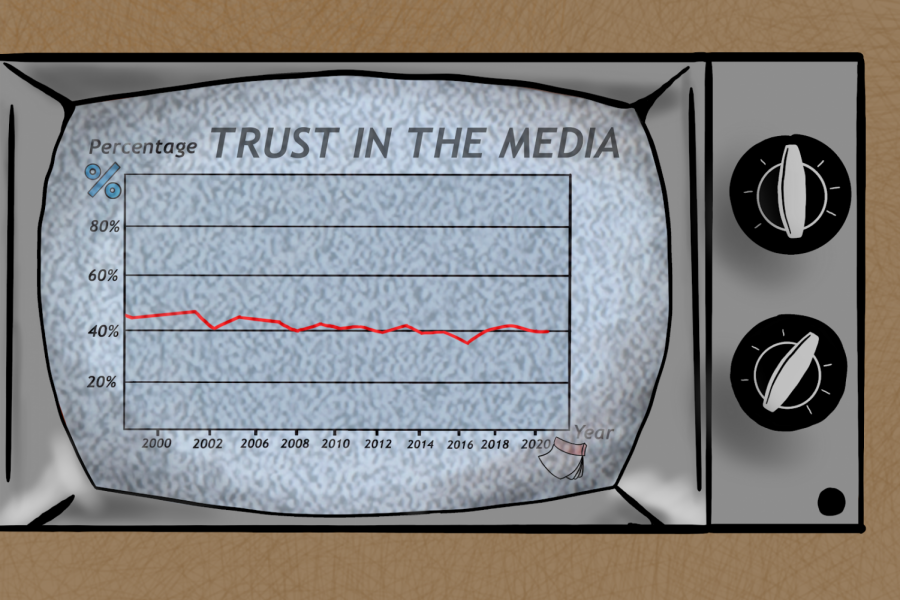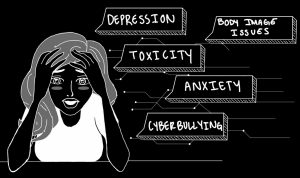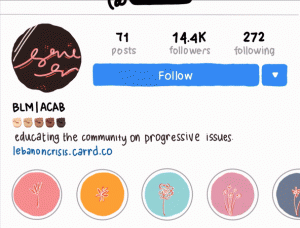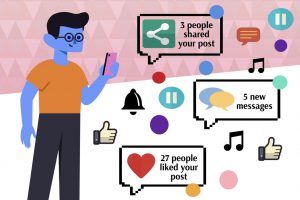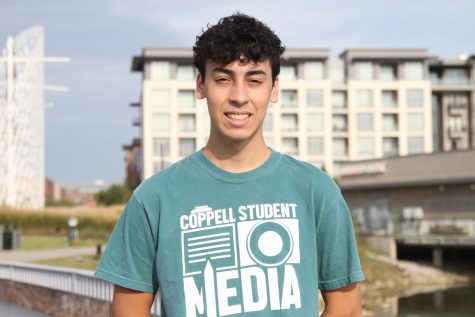Waging an inevitable war (Part 1)
According to the poll conducted by Gallup, six out of 10 Americans have either little or no trust at all in mass media. This distrust has grown throughout the last couple of decades due to recent political views and influences. Graphic by Josh Campbell
February 2, 2021
Competition vs. accuracy
Clickbait vs. quality
Fake news vs. journalism
Mutually exclusive or intertwined?
Information is a double-edged sword. As the wielders, journalists pick their battles each day, wondering if it is possible to win them all or leave, inevitably scarred.
Today, the battle lines are blurred. The rise of 24 hour news, the internet and social media have created a world in which a proliferation of information could amplify a deep-rooted threat to American democracy: distrust of the press.
Historical wounds
Protected in the First Amendment of the U.S. Constitution, freedom of the press is inherent to our democratic ideals.
Yet, throughout history, distrust of the press has been an unresolved, pervasive issue.
Since the 1970s, trust of the press has been decreasing from a high of 72% in 1976 to a record low of 32% in 2016. In 2020, the number slightly increased to 40%, and Republicans are more than twice as likely to be untrusting of the mass media when compared to Democrats.
“Distrust in the press goes back centuries,” The Dallas Morning News vertical news editor Beth Frerking said. “There are times when it’s worse than others, in part because we had a president who was very vocal about his distrust of the press, so we’ve seen it expressed a lot more. It’s hard to know whether distrust has increased because we didn’t have nearly as many opportunities to seek public feedback. Maybe that level of distrust has always been there, and we just didn’t have ways to see it.”
While the problem may have reached new heights in recent years, concerns surrounding journalism have been ongoing. The government and independent press have been consistently critical against one another, evidenced by former President John Adams’ Alien and Sedition Acts which suppressed criticism from the press and in regards to social media, former President Donald Trump’s attempts to reduce the protections of Section 230.
“At that time, there were the same worries about journalism that we hear now,” said Sally Lehrman, award-winning journalist and founder of The Trust Project. “That [the press is] hyper partisan, they’re only trying to sell paper and that they’re not operating in the public interest.”
To an extent, the accusations do have a historical basis. For instance, during the late 1800s, the rise of yellow journalism, a term given to represent sensationalized reporting, allowed for greater misinformation and influenced public perception of the Spanish-American War.
However, along with consistent criticism, attempts to change the status quo and restore trust in the press have been consistent throughout history as well. Various endeavors such as the Hutchins Commission of 1947 called for increased responsibility on the part of the media to reduce bias and sensational reporting.
Centuries later, the efforts continue. Despite distrust, platforms such as The Trust Project, Trusting News, and fact checking websites have dedicated themselves to restoring faith in the media.
Digital giants emerge
The historical wounds remain, but as they attempt to heal, new weapons are entering the field.
On June 1, 1980, Ted Turner founded CNN, the nation’s first 24 hour cable news channel. The onslaught of time brought with it a unique and potentially damaging requirement.
“When the news was not 24 hours, news was about giving information and not opinion,” Coppell High School AP psychology teacher Kristia Leyendecker said. “Throughout the last 20 years, we’ve seen news take a different role. You still have the people who are there to give information, but what got added was this commentary aspect and when that happened, news started becoming a show. The ability to rely upon that objectivity from reporters started to go away, and you saw news organizations leaning one way or the other.”
Then came the rise of the internet. The birth of digital media made the news much more accessible, and the presence of a wide base of information, coupled with a variety of differing biases, made it hard to distinguish the quality of journalism.
“What happened with the internet is that news organizations didn’t adapt quickly enough,” said Lynn Walsh, emmy-winning journalist and Trusting News assistant director. “They didn’t label their content properly, and we didn’t educate the public on what kind of information is floating out there and how to decipher accurate information from misinformation and disinformation.”
Misinformation is incorrect information that has unwittingly been circulated, while disinformation is false information that is deliberately spread with an intent to deceive.
Social media creates another dilemma. Although individuals have quick access to information and breaking news, sharing and reposting information allows news to get manipulated. Spreading misinformation and disinformation is much easier to carry out in the open forum of social media.
With algorithms catered to display information that was aligned with an individual’s beliefs, users could now exist in echo chambers, uninformed of opposing political or cultural perspectives.
“The initial post on social media is amazing,” CHS associate principal Melissa Arnold said. “What’s hard to get past are the comments. I can’t tell you how many times I wish there was a turn comments off button, and it was just the story that you read. If we just read the story and went back and read the update, we would be good to go. But when we start getting trolls or keyboard warriors, you start missing the meat of the story and taking the comments of the everyday person throwing their opinions out there as true. That’s where the issues come up.”
The relative anonymity that can come with social media also allows for the spread of even more misinformation, reducing the fear of identification on the part of the individual and liability on the part of the company.
“The brilliance behind social media is that you can say whatever you want and hide,” Leyendecker said. “You don’t have to see the impact of what you are saying. There is nobody to hold you accountable. There’s people out there who purposefully incite conversation so people feel the need to comment on it. It becomes an addiction, and human beings thrive on conflict and chaos, so they seek it.”
Furthermore, sharing content without verifying the purpose and viewpoint of information could have unintended consequences.
“Social media has allowed several satirical news sites to be taken seriously by people who don’t have the knowledge to understand it,” Arnold said. “It allows people who don’t know how to research what is a credible source to take the satirical ones as true.”
The imminent dangers
In the last four years, tensions between politics and the press have risen to all-time highs.
To Arnold, despite the number of credible journalism sources, the proliferation of biased reporting has contributed to greater partisanship and polarization.
“There has been so much one-sided reporting, and that is where the trust has broken down,” Arnold said. “We’ve gone away from just reporting the facts. Everything has become to be, in a way, an opinion type of paper.”
Frerking, who spent more than 30 years as a journalist in Washington D.C., thinks the issue stems from the lack of time journalists now have to fact-check their sources and get the most balanced, fair story.
“As a trained journalist, you work very hard to make sure that all bases are covered,” Frerking said. “You make sure to talk to the other side. You don’t want one side making accusations or assertions without making sure you go to the other side. It’s just that all of this is occurring at lightning speed, and that was not the case when you didn’t have the internet.”
During COVID-19, social media usage has hit record highs as well, developing a greater influence over individuals’ views and, along with the lack of media literacy, allowing for more false information to be circulated.
“We have a responsibility to think before sharing things,” Walsh said. “Social media companies have a responsibility to do everything they can to get rid of the actors who are purposefully spreading misinformation and disinformation for causes that will cause harm.”
If distrust of the press continues to rise, increased polarization could deepen divides in America.
“The consequences are dire because we have to share an understanding of issues and events,” Lehrman said. “Journalism plays that role. It brings together all the different ideas and issues in society into a space that helps one community learn about another, and helps us understand what’s happening in our own communities. It all relies on a reliable source of information, and that is why trust in news is so important.”
Editor’s note: This is part 1 in a series exploring today’s news media and the impact of distrust on its consumers. Read part 2 and part 3 here.
Follow Avani @AvaniKashyap03 and @CHSCampusNews on Twitter.




